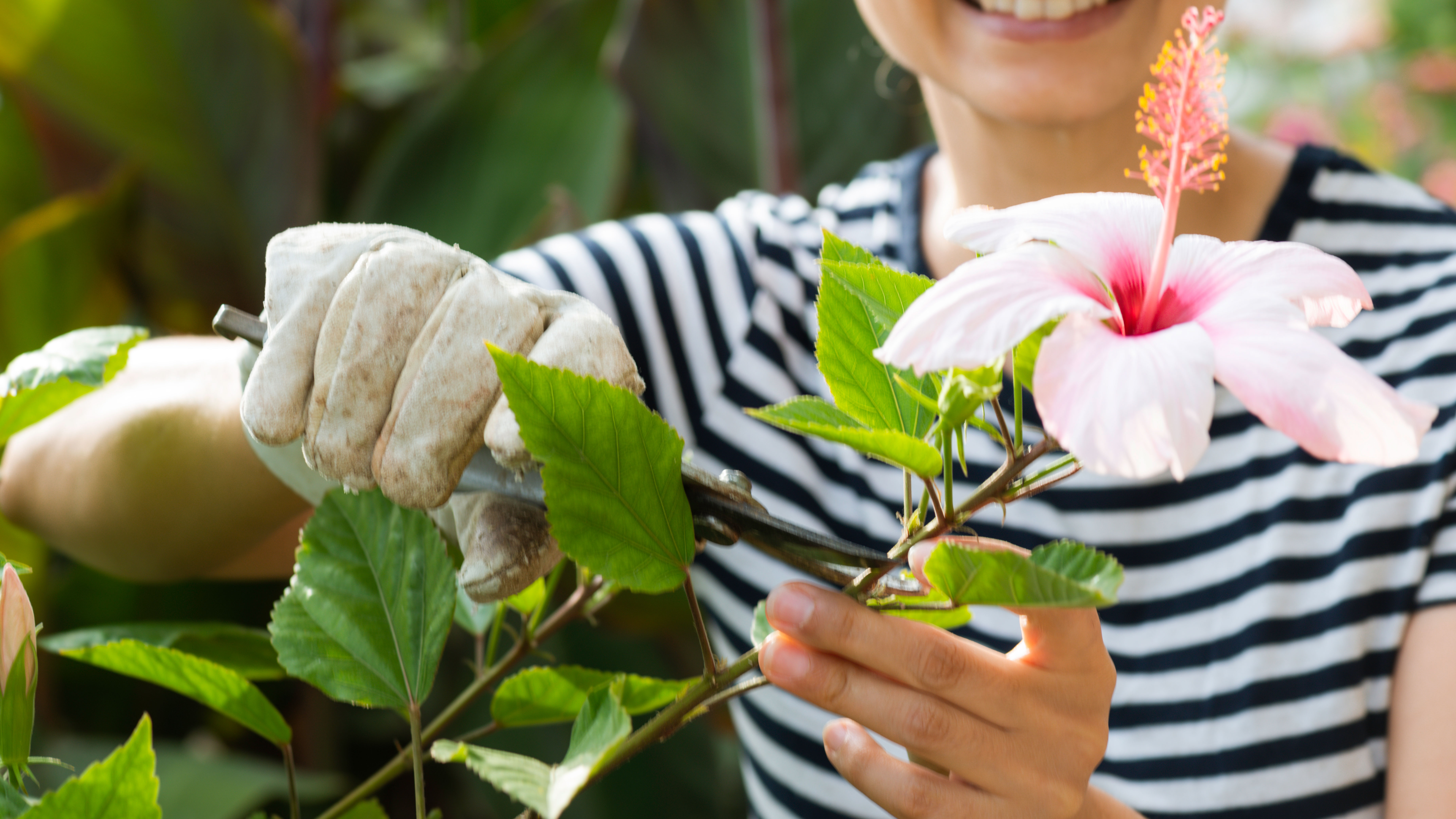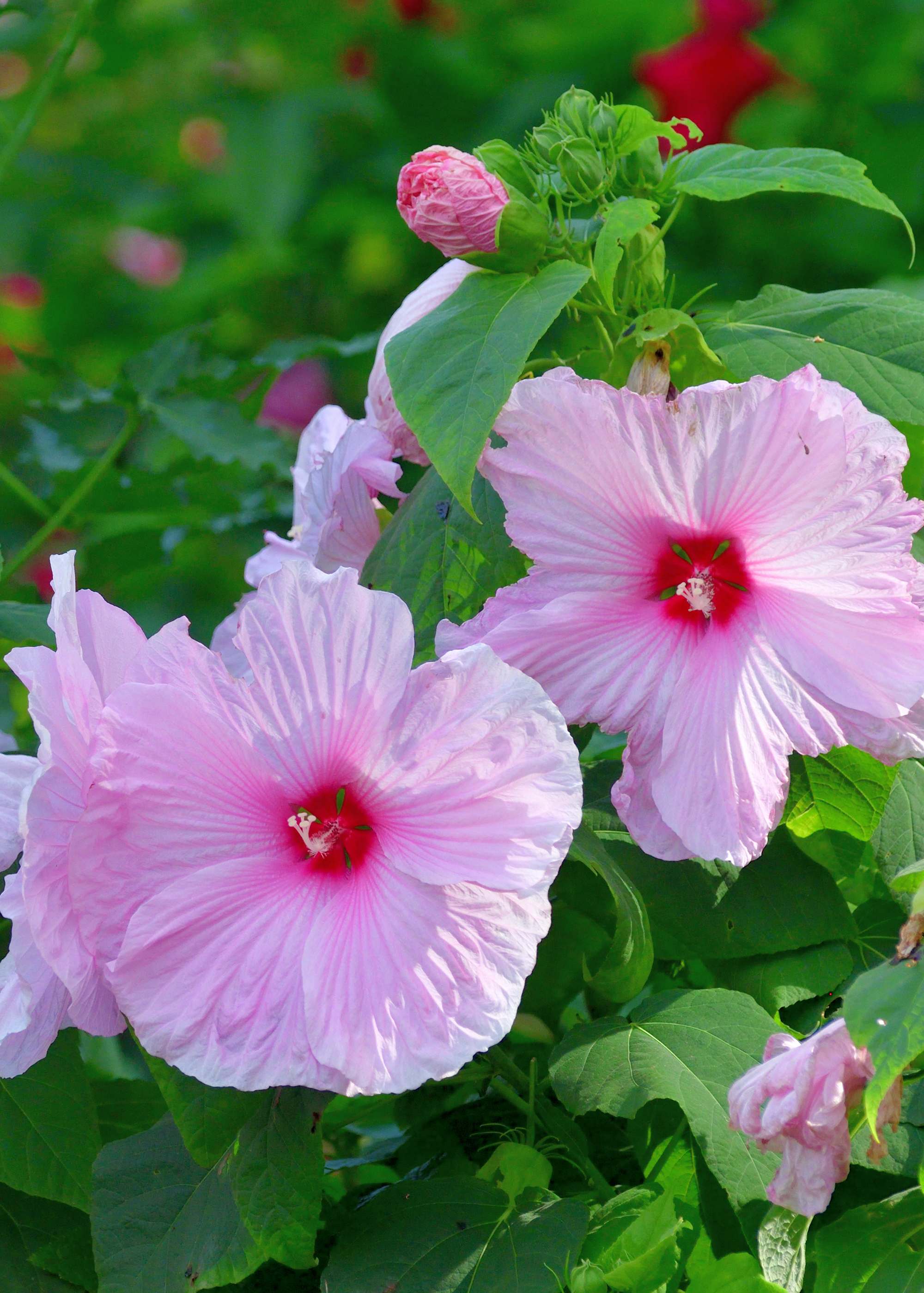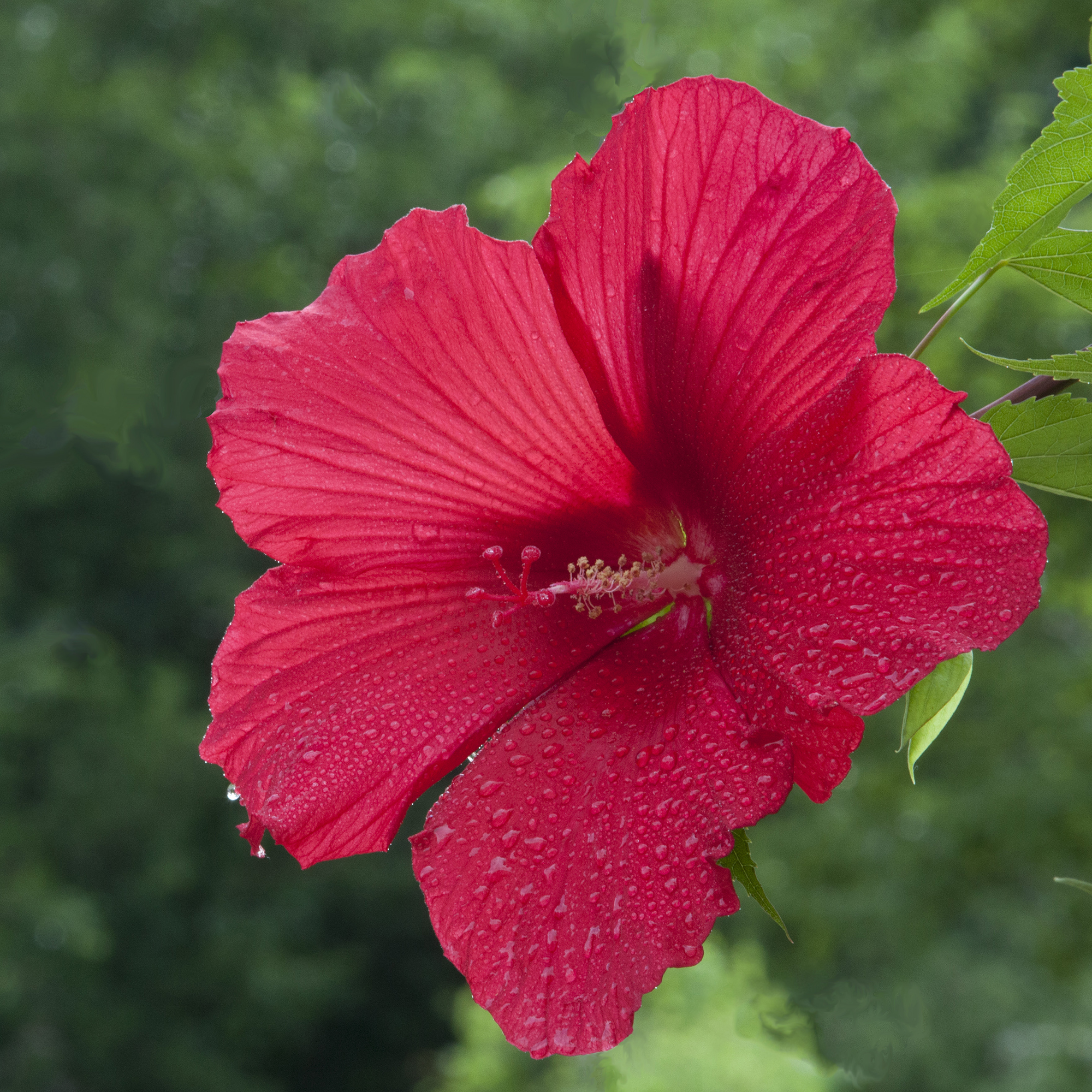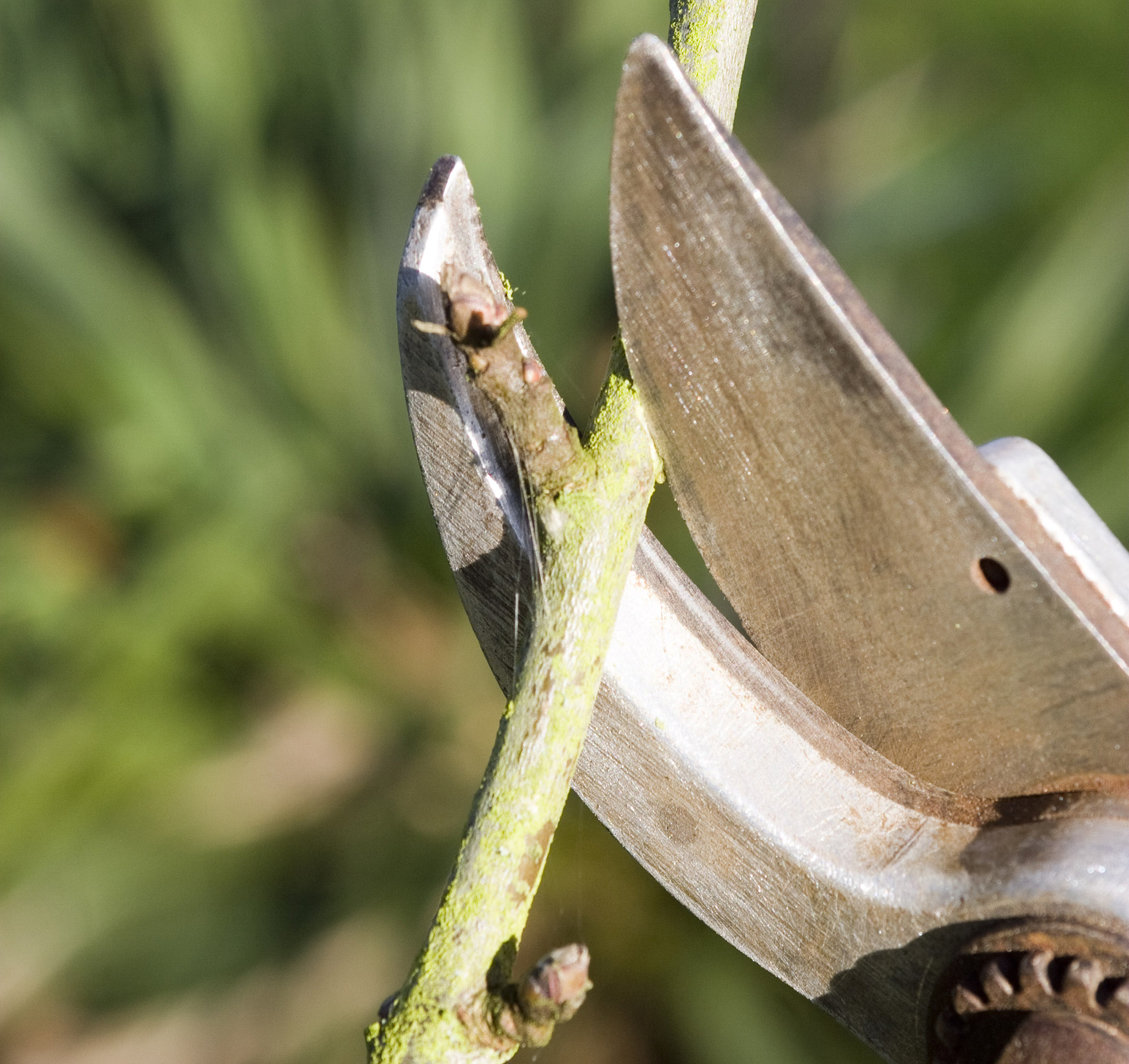How to prune hibiscus – to keep them flowering for longer
Learn the simple art of how to prune hibiscus to keep your plant in good shape and to maximize blooms


Learning how to prune hibiscus is easy and will keep your plant in great condition. Hibiscus are beautiful and showy plants with large, bright flowers in a range of colors, from yellow to pink. Highly decorative, the flowers can bring a tropical feel and a pop of color to your garden. The flowers and buds are also edible and make a beautiful sweet tea.
Hibiscus flowers are short-lived, usually only blooming for a single day. However, if you have included them in your flower bed ideas, and prune them correctly, you will have a profusion of flowers and a long-lasting colorful display with new flowers opening every day.
The hibiscus family is a large one including species that are herbaceous perennials, annuals, woody shrubs and even trees. The varieties most commonly found in gardens are Hibiscus syriacus, a hardy deciduous flowering shrub and Hibiscus rosa-sinensis, or Chinese Hibiscus, a tender evergreen shrub only grown in the tropics and subtropics.
Follow this easy guide and learn how to prune hibiscus. You will be pleased to know that pruning hibiscus is a whole lot simpler than you might think.

How to prune hibiscus
If you want to know how to prune hibiscus correctly, the first thing you need to establish is what kind of hibiscus you’re dealing with.
There are numerous varieties with a range of characteristics and blooms of different colors. If you choose the right type for your garden and plant it in the right place, and learn how to prune hibiscus in the right way, they will produce a stunning floral show throughout the growing season.
Treat your hibiscus well and you will create a flowering machine – as one day’s flowers fade, so a vigorous array of new flowers will appear to succeed them. With so many colors to choose from, you can include hibiscus in a range of garden color schemes.
Design expertise in your inbox – from inspiring decorating ideas and beautiful celebrity homes to practical gardening advice and shopping round-ups.
How to identify hibiscus
If you planted your hibiscus yourself, chances are you’ll already know which category it falls under. If, however, you’ve inherited a ready-planted hibiscus in your garden you’ll need to identify at least the category it belongs to in order to know how to prune hibiscus in the right way. Just as you prune rhododendrons in different ways and at different times depending on the variety, the same is true of hibiscus. The outline below will help with both scenarios.
How to prune native hibiscus

Native hibiscus (Hibiscus moscheutos) – also known as common rose mallow, swamp mallow, or marsh hibiscus – are native to the southeastern US. Choose between pink, red and white flowering varieties. As its name suggests, the swamp mallow prefers marshy wetland habitats, but can tolerate drier spots if kept well watered. The scarlet rose mallow is a beautiful variety, common in Florida, which can grow to 4 to 8 feet tall (1 to 2.5 m.).
According to Gena Lorraine, gardening expert at Fantastic Services, ‘Native hibiscus is very easy to care for but sometimes they can grow a bit leggy and too tall.
To keep a healthy height, you need to make sure you know how to prune hibiscus.
'Make sure to cut its stems back towards the end as they are from the previous season and the plant will not bloom from these. You should do that in late winter or early spring before the new growth. Always use sharp blades and if the plant looks tender and leaning, you can tie it to a supporting stake,’ says Gena.
How to prune tropical hibiscus

Tropical hibiscus (Hibiscus rosa-sinensis), as the name suggests, can only survive permanently in zones 9-11 and suit tropical garden ideas. They have glossy dark green leaves and flowers of rich reds, yellow, orange through to peach, pink and gold. With their showy blooms, they are great as shrubs for the front of the house to increase its curb appeal.
'There are many forms of rosa-sinensis,’ says Byron Martin from Logees Plants in Connecticut. ‘The coloration of the flowers is really extraordinary; there's so much diversity in the color it could take years to become familiar with the amount of beauty that is in this genus,’ he continues.
Tropical hibiscus share some characteristics with the native hibiscus. If you live in a cooler climate, it’s still possible to grow tropical hibiscus, but in this case you will treat it as an annual, or bring it indoors into a conservatory or heated greenhouse before the temperatures start to drop outside.
Gena Lorraine offers the following advice on pruning tropical hibiscus: ‘this type of hibiscus should be pruned until it achieves a tree-like shape but the timing really depends on where you live.
‘In the US the best time to prune is in spring or when the weather starts warming up. Never prune tropical hibiscus in fall as you risk freezing the new and still tender growth. Also, it’s recommended to bring your tropical hibiscus inside in winter if it’s planted in a pot. On the other hand, if you live in a tropical area, you can prune the plant all year round. Start pruning by removing the outer growth and any suckers growing around the base. Of course, keep an eye on diseased branches to avoid spreading.’
How to prune hardy hibiscus

Hardy hibiscus (Hibiscus spp) have heart-shaped, dull green leaves and white, pink or red flowers. They are similar in nature to tropical hibiscus, but the main difference lies in where they can grow. Hardy hibiscus are cold tolerant in cooler US zones 5 to 8, hardy hibiscus produce showy flowers in a range of colors.
Known for her step-by-step gardening tutorials, and, describing herself as ‘a native of chilly zone 5, where we love hardy hibiscus’, gardening expert Mary Jane Duford says: ‘Hardy hibiscus is a low-maintenance perennial that needs only basic pruning.’
She adds, ‘This type of hibiscus dies back to the soil surface each winter in the cooler zones in which it thrives. New sprouts appear in the springtime, after most other hardy herbaceous perennials have sprouted. At this point, any remnants of overwintered stems can be trimmed off with sharp, clean pruning shears.’
Pruning is not required during this summer foliage growth period, although stems can be pinched back when under a foot tall if a shrubby form is desired. Once the plant starts to flower, remove spent blooms as they finish flowering. This plant is known for its incredible flowers, and looks much more attractive when the wilted blooms are removed.
In the late fall, long after flowering is finished, you will need to prune hardy hibiscus stems following a hard frost. If you wish, you can leave 3-6 inches of stem visible to remind you where the plant is. Although Mary Jane Duford adds that stems ‘can also be left standing until early spring to support the local bird population during the winter months.’

How should hibiscus be pruned?
How hibiscus should be pruned depends on the variety you have. Once you have identified the variety of hibiscus that you have, you will be able to choose what is the best way to prune by following this guide.
All pruning should be carried out with a pair of sharp, clean secateurs. A clean cut made by a sharp tool will heal easier than a messy cut. Using a clean tool will also help to reduce the chances of infection. It is also good practice to prune on a dry day.
How hard can you cut back hibiscus?
You can cut hibiscus right back, but pruning is a matter of choice. Good pruning will promote flowering.
Native hibiscus can get quite tall and start to look a little untidy, so if you want a neater plant with more blooms make sure to prune as directed above. Tropical and hardy hibiscus can be pruned into an attractive tree shape, or kept as a bushy shrub.
Karen sources beautiful homes to feature on the Homes & Gardens website. She loves visiting historic houses in particular and working with photographers to capture all shapes and sizes of properties. Karen began her career as a sub-editor at Hi-Fi News and Record Review magazine. Her move to women’s magazines came soon after, in the shape of Living magazine, which covered cookery, fashion, beauty, homes and gardening. From Living Karen moved to Ideal Home magazine, where as deputy chief sub, then chief sub, she started to really take an interest in properties, architecture, interior design and gardening.
